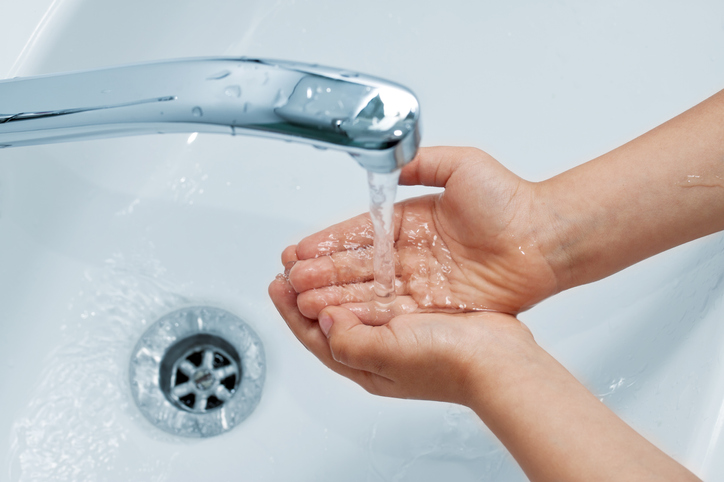Handwashing is, by far, the most effective way to help prevent your children from getting sick and the best way to prevent the spread of germs. Time spent washing hands can, therefore, reduce the amount of time spent in a doctor’s office!
So, the question isn’t whether or not it’s worthwhile to teach your children correct handwashing techniques. Instead, it’s a question about what the most optimal hand hygiene practices are. Here are four key steps:
- Have your child wet his or her hands with clean, running water. This doctor says cold and warm water are both effective but don’t make it too hot.
- Lather hands with soap and water for 20 seconds.
- Explain how it’s important to get your whole hand clean, which includes the fronts and backs, plus in between fingers, beneath fingernails, and even your wrists.
- Tell your child to rinse well and then dry his or her hands with a clean towel.
Centers for Disease Control and Prevention (CDC) calls handwashing an “easy, cheap, and effective way to prevent the spread of germs and keep kids and adults healthy. When your family is healthy, you don’t have to worry about missing school, work, or other activities.”
It’s best to teach children the importance of washing hands at a young age—and not just when hands are visibly dirty. It’s also crucial to wash hands with soap and water after using the bathroom and before eating, as well as after playing outside, touching pets, and sneezing, coughing, and blowing noses. Other times include after your child touches his or her eyes, nose, or mouth or a scrape or cut. Here are a few more examples: after touching pet food; being around someone who is sick; after being by garbage; and after being near a dirty diaper.
How Parents Can Help
Like with just about any other healthy habit, your child will likely need reminded how to wash his or her hands, and when. It can help to allow your child to watch you wash your own hands. Plus, it never hurts to turn handwashing into a game. Your family could sing “Happy Birthday” twice to help make sure the washing went on long enough. Or you could even create a unique song to sing while washing hands.
If your child is too small to reach the sink alone, you can help lift him or her. StanfordChildrens.org suggests placing a safety step by the sink and boosting your child up that way. If there isn’t a practical way for your child to get to the sink, then you can add soap and water to a damp paper towel and use it to wipe off his or her hands. Rinse with a clean paper towel; dry with another; and then wash your own hands.
If your child needs to wash hands but soap and water aren’t available, the CDC suggests using an alcohol-based hand sanitizer with 60% or more alcohol. Use a quarter-sized amount of hand sanitizer, squirted into the palms. Your child can rub hands together, both front and back, until they feel dry. Then, once you do have access to soap and water, have your child get his or her hands clean that way.
Explaining Germs to Your Child
It’s normal for children to wonder why there is so much fuss being made about handwashing. To help, you can explain that germs are tiny, too small to see, on tables, door handles, pencils, phones, and much more. When someone comes in contact with germs, they can get sick—and then spread that illness to other people. You can talk to your child about how nobody likes to get sick, and clean hands are a great way to stop the spread of germs to help keep everyone healthy. Here’s more information about how to stop the spread of germs.




